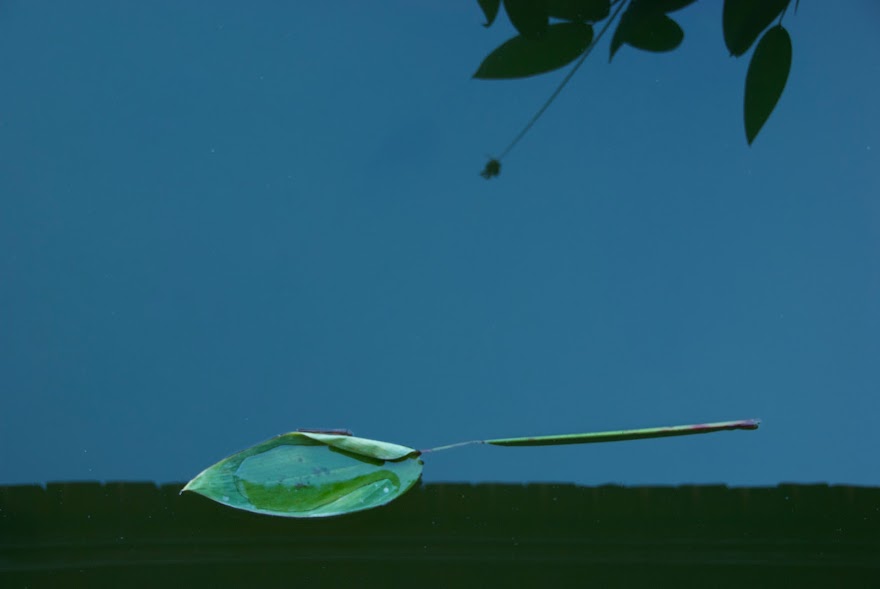A broken Dartington crystal glass discovered last evening is perhaps the last of the damage from a wave that exploded onto and into GANNET last Thursday, 350 miles north of here, and for a few seconds, in which time slowed almost to a stop, held us in the balance.
The immediate damage from the wave was a tiller pilot and interruption of solar charging; but I’ve continued to discover more daily. A pair of shoes. The LuminAID light. A cracked headlamp. A bar of soap. A measuring cup I inelegantly call the piss pot.
Not all passages are a pleasure. This one was not. Hot, wet and if not unexpectedly slow—we were crossing wind systems, not running with them—then certainly not fast. We averaged six knots for only one three day period; and though we didn’t ever come to a complete stop, we had four days of less than 100 miles, not including the first and last partial days. Curiously when I added up the daily runs a few minutes ago I discovered that we sailed 2266 miles, which is only six more than the 2260 distance between Honolulu and Apia waypoints.
The slowest we went was not in the Convergence Zone, but the second day out when we made only 8.2 miles in six hours between 1200 and 1800.
My memory is that an object casts a wind shadow eleven times its height. The island of Hawaii is roughly three miles high and so should have a wind shadow of thirty-three miles. We were more than a hundred miles west of Hawaii, but I hypothesize that the island was still disturbing our wind which remained erratic until we reached the latitude of Hawaii’s southern coast and the trades filled in.
I had not realized how heading to Hawaii would change the wind angles later. Only rarely from Honolulu to Apia was the wind aft of the beam, and usually it was ahead of it. A lot of water came aboard. A lot poured over me. A lot of clothes were so soaked I just took them off and threw them into the sea. This in combination with GANNET’s cabin becoming an oven, meant that I have more salt water boils than Job and, to continue Biblically, became from sea and sweat a pillar of salt without even the compensation of a momentary glance back at Sodom.
For those crossing the Pacific from North America, it is far better to head south for the Marquesas from where the wind will be well aft until they leave the tropics.
Damage from a cyclone is still being repaired in Apia and, disappointingly, the marina has no showers. That is what I was looking forward to most. I did take a long solar shower in the cockpit yesterday, perhaps providing incidental entertainment to patrons of a nearby restaurant. I was discreet; and anyone who wants to perve on this old man is welcome to. But the salt had to come off. The spectacle will be repeated daily.
Early in the passage I made the transition from my usual starboard pipe berth, which was to leeward on this passage, to port. It was easier than I expected, even moving the Avon RedStart. But then, one afternoon while standing in the companionway I idly removed the Velcro I had put there to hold the failed cover and learned that the problem with the companionway hatch has been me. With the Velcro off, I saw that I had blocked drains on each side of the hatch. With them uncovered, the hatch is not deficient. It is excellent. Many subsequent waves broke over the hatch and the water drained harmlessly away.
What I was thinking when I applied the Velcro, if anything, I don’t recall. GANNET did not take many waves over the deck on Lake Michigan or San Diego.
The sailing I enjoyed most on this passage was one night in the Convergence Zone when the wind went north. I was already in my berth when I heard the sails slatting, went on deck, furled the jib and eased the main, then went back below, where I lay for twenty minutes knowing that the asymmetrical was the right sail before I got up and set it. This is something I never would have done at night before asymmetricals and gennaker furling gear. Once up the sail moved us gracefully at five knots in about that much wind all night, until just before dawn the wind backed and I had to furl and lower it.
I spent most of yesterday dealing with officials. Today I’ll walk around and see what I can discover.
Just before our first sunset about thirty-five miles south of Honolulu, a Navy ship with number 70 painted on its bow steamed toward GANNET at high speed. As it neared I got the handheld VHF and called them.
“Naval Vessel 70. This is the sailboat you are approaching. Do you want something?”
“This is Naval Vessel 70. No, sir. We just saw this rather small boat some distance from shore and wanted to be certain you are all right.”
“Thank you for your concern, but I’m fine. I’ve cleared for Apia, Samoa and am slowly sailing that way.”
“Very good, sir. This is Naval Vessel 70 out. Standing by on 16.”
“This is GANNET out.”
I did appreciate their coming over to check on what is a very small vessel unusually far from shore, but not for her. That was professional and humane even though in this instance unnecessary.
Typing this reminds me that doing things in port is so easy it hardly seems sporting.
Samoa has moved itself across the Dateline. Therefore I am now a day ahead of the U.S.

.jpg)